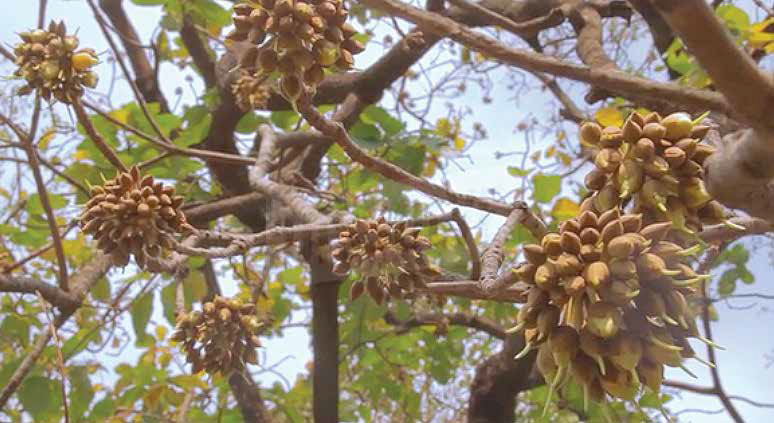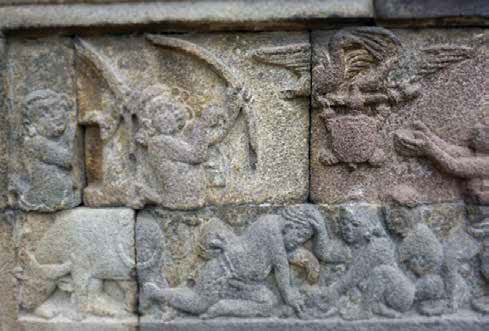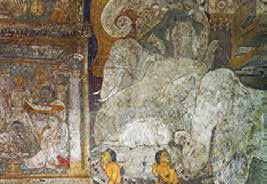Stories and storytelling practices in heritage tourism act as beacons of innovation to change perceptions of and connect experientially with heritage landscapes and human practice. A compelling collection of stories about heritage and adopting an effective way to tell them increases visitor footfall. It empowers local creative communities, which play a role in conserving heritage and facilitating sustainable, responsible tourism. The repository of tales and how they are curated and presented form part of interpretative commentaries associated with heritage environments, be it a building or engagement with intangible heritage such as performances, crafts, cuisine or with a natural heritage site, transform audiences from mere visitors into participating rasikas (or active audiences). Dramatic storytelling in heritage tourism comprises lively, immersive, interactive, theatrical presentations of the heritage landscape and local cultures. This essay brings illustrations of existent folklore, riddles, legends, songs and other forms of oral and written stories that celebrate the content of stories in real and imagined heritage experiences. The short account explores the theme of ‘stories in heritage tourism’ to connect and rejoice in the reflected shared past between different cultural sensibilities transcending regional and international borders.

Birds of the Divine Water
Indigenous tribal tours bring stories surrounding cultural practices and world views dating back centuries to the forefront. Which story to select and how to tell them requires imagination. Recently, across India, several tribal museums have been established to display these ancient communities, and simultaneously, the growing popularity of tours on tribal facilitate journeys into their lesser-known world where there are stories on community symbols, practices, beliefs and festivals. Telling these tales opens doors for the visitors to immerse themselves in their exotic world. Often, stories of indigenous cultures revolve around the theme of nature and the environment; hence, the encounter with the tribal world becomes a humble reminder to address the hovering global environmental crises. The journey itself translates as climate action through heritage tourism.
![]() It was an exciting tour into the world of the forest dwellers, the ‘Gonds’ in Bastar, Chattisgarh, a Central Indian state. Shyam Gond proudly led the travellers on a village tour, going in and out of homes adorned with vibrant paintings and visually communicating fascinating stories. Soon, the visitors were walking a jungle path when a handsome pied Kingfisher swooped down from an Indian Butter Tree or Mahua (Madhuca longifolia), dived a pond of water and then rose to soar with a fish in his beak. Shyam sang a riddle in his native language, turned, and translated for the audience – “His wings are white, on his head is a tuft of hair, and He meditates by the river, we (fishes) thought him an ascetic, by his tricks, he takes our lives.” Shyam teasingly asked the travellers, ‘What is it?’ and a traveller in the group replied, ‘Kingfisher!. Shyam laughed and led the group closer to the Mahua tree, where birds sang in a chorus. Shyam dug into his shoulder bag and took a Gond painting of a tree filled with birds and curious flowers. “While the birds remind us of freedom and symbolise us to dream of eternity, the Mahua flowers occupy a seminal sacred place in the Gond world. Once, a man strolled around the forest when he saw a Mahua tree from which the beautiful flowers fell and filled a pool of water. As he neared the water pool, he saw that the pace of falling flowers from the tree increased in the light-blowing breeze. The birds sang in accompaniment to the dance of the falling flowers. The man sat, watched, leaned over, and sipped the water now soaked with flowers. A current ran in him; he saw the beauty and power of nature; he felt the supreme spiritual energy, and from then on, Mahua is special to us!”
It was an exciting tour into the world of the forest dwellers, the ‘Gonds’ in Bastar, Chattisgarh, a Central Indian state. Shyam Gond proudly led the travellers on a village tour, going in and out of homes adorned with vibrant paintings and visually communicating fascinating stories. Soon, the visitors were walking a jungle path when a handsome pied Kingfisher swooped down from an Indian Butter Tree or Mahua (Madhuca longifolia), dived a pond of water and then rose to soar with a fish in his beak. Shyam sang a riddle in his native language, turned, and translated for the audience – “His wings are white, on his head is a tuft of hair, and He meditates by the river, we (fishes) thought him an ascetic, by his tricks, he takes our lives.” Shyam teasingly asked the travellers, ‘What is it?’ and a traveller in the group replied, ‘Kingfisher!. Shyam laughed and led the group closer to the Mahua tree, where birds sang in a chorus. Shyam dug into his shoulder bag and took a Gond painting of a tree filled with birds and curious flowers. “While the birds remind us of freedom and symbolise us to dream of eternity, the Mahua flowers occupy a seminal sacred place in the Gond world. Once, a man strolled around the forest when he saw a Mahua tree from which the beautiful flowers fell and filled a pool of water. As he neared the water pool, he saw that the pace of falling flowers from the tree increased in the light-blowing breeze. The birds sang in accompaniment to the dance of the falling flowers. The man sat, watched, leaned over, and sipped the water now soaked with flowers. A current ran in him; he saw the beauty and power of nature; he felt the supreme spiritual energy, and from then on, Mahua is special to us!”
Fantasy and Magic Tales – Reimagining Past Worlds
A traveller aspires to escape his everyday world, and the element of fantasy creates a special effect similar to the stagecraft of lighting and sound in a live performance on stage. Myths, folklore and community histories carry magic that transforms the heritage surrounding into an imagined world.
The Story of the Hidden Marriage Procession in Delhi
![]() Delhi, the chosen location for many rulers over centuries, encapsulated stories and stories in every page of her colourful historical past. A walking tour experience in the crowded Old Delhi navigating one narrow lane to another in the neighbourhood behind the 17th-century Turkman Gate conjures magical and fantasy tales surrounding the 12th-century itinerant Sufi Saint Sahms-ul-Arifeen Shah Turkman Bayabani after whom the Gate is named. The word bayaban, which means wilderness, refers to the preference of the ascetic to seek quietude and isolation in what at one time was a forested jungle. Stories surrounding Sufi mendicants (Islamic mystics) permeate heritage landscapes across the Indian subcontinent. Many Sufi mendicants travelled over centuries, some with caravans and others with armies, and others made their journeys across North-South and East-West along the land and sea route in Asia and beyond the continent. The hospice of Shah Turkman lies in a quiet corner in the interiors of the neighbourhood. The forest existed before Shahjahan, the fifth Mughal Emperor, chose and built his capital (Shahjahanabad) in the 17th century. The entry into the Sufi hospice opens the view to many graves belonging to revered wise men, and between them are many big black cats believed to be friendly djinns walking around. An old caretaker takes pride in narrating the tales of Shah Turkman and the Sufi hospice, “The stately royal mosque of Jama Masjid built by Emperor Shahjahan is located on the Bhojla Hill where once dwelt Bhojla, a feared robber who attacked and looted those who crossed the forest.
Delhi, the chosen location for many rulers over centuries, encapsulated stories and stories in every page of her colourful historical past. A walking tour experience in the crowded Old Delhi navigating one narrow lane to another in the neighbourhood behind the 17th-century Turkman Gate conjures magical and fantasy tales surrounding the 12th-century itinerant Sufi Saint Sahms-ul-Arifeen Shah Turkman Bayabani after whom the Gate is named. The word bayaban, which means wilderness, refers to the preference of the ascetic to seek quietude and isolation in what at one time was a forested jungle. Stories surrounding Sufi mendicants (Islamic mystics) permeate heritage landscapes across the Indian subcontinent. Many Sufi mendicants travelled over centuries, some with caravans and others with armies, and others made their journeys across North-South and East-West along the land and sea route in Asia and beyond the continent. The hospice of Shah Turkman lies in a quiet corner in the interiors of the neighbourhood. The forest existed before Shahjahan, the fifth Mughal Emperor, chose and built his capital (Shahjahanabad) in the 17th century. The entry into the Sufi hospice opens the view to many graves belonging to revered wise men, and between them are many big black cats believed to be friendly djinns walking around. An old caretaker takes pride in narrating the tales of Shah Turkman and the Sufi hospice, “The stately royal mosque of Jama Masjid built by Emperor Shahjahan is located on the Bhojla Hill where once dwelt Bhojla, a feared robber who attacked and looted those who crossed the forest.
Bhojla, the robber, respected Shah Turkman, whose spiritual power gained much fame. On one occasion, Bhojla and his men chased the procession of a wedding party laden with gold and silver. The people, including the drummers and musicians travelling with the caravan, ran and sought the protection of Shah Turkman, who sat sipping herbal tea in his humble shelter. Hearing the plea to save them from the robber, Shah Turkman hid the entire procession in his cup and kept it in a closet in the wall behind him.” The old caretaker stopped and told the visitors, “If you come here at midnight and put their ears against the wall, you will still hear the sounds of drums and trumpets! Later, when Bhojla died, he too was buried here in the hospice.”
Stories and Empowerment of Local Creative Communities
Stories and different ways to tell them in tourism introduce, on the one hand, the traveller to varied cultural traditions and skills surrounding heritage sites, but also provide a more holistic experience to the visitor, sustainability to the local creative communities and ensure the conservation of the intangible living heritage of the area.
![]() Like most parts of India, the landscape around the World Heritage Site of Hampi, in North Karnataka, has many living cultural heritage skills of crafts and performing arts, of them the art of shadow puppetry locally called Togalu Gombeyaata and the theatrical street performing art of traditional impersonation called Hagalu Vesh are storytelling traditions empowered to bring the imposing stone reliefs, sculptures, and mythological tales of the grand heritage site alive.
Like most parts of India, the landscape around the World Heritage Site of Hampi, in North Karnataka, has many living cultural heritage skills of crafts and performing arts, of them the art of shadow puppetry locally called Togalu Gombeyaata and the theatrical street performing art of traditional impersonation called Hagalu Vesh are storytelling traditions empowered to bring the imposing stone reliefs, sculptures, and mythological tales of the grand heritage site alive.
Hampi, built and ruled by the Vijaynagar Empire (14th-17th Century), also carries many mythological histories, especially the association with the story of the epic Ramayan, making it unique. It was here that Hanuman, the Hindu Monkey God, was born, and it was in Hampi, Ram met Hanuman, among other events from the epic.
The range of spectacular ruins against the Tungabhadra River, marked by granite outcroppings, has multiple meanings of past landscapes that span mythological canvases and interplay of power. It is encased in factual and oral histories that echo the lived picturesque beauty of the natural setting. The mythological association of Hampi and the Tungabhadra River, locally called Pampa, forms the anchoring identity of the location that provided the Vijaynagar Kings legitimacy of power through ritual associations.
When Epic Tales is Performed -The Ramayana Story Tour with Traditional Impersonators

Ramu, who hails from the impersonation tradition Hagalu Vesha, described, “We are the Bugajngam community and have been entertaining local communities as mythological actors from the epics and the Puranic stories.” Initially residing in tents, moving from one village to another, they now live a more settled life. “We perform at different pilgrimage sites, processions, and markets, and now I have a small 12 male actor company. Earlier, the women used to set up tents, but they are also storytellers who use hand puppets and perform door to door, and for their performance, they are given rice.” Rituals characterise their transmission and performance systems. “For example, on Hanuman Jayanti (the birthday of Hanuman), we have special rituals for our community deity. We wash our costumes and accessories like the Gada (mace), place them in front of our altars and pray. We make our costumes and sets as craftsmen, but the income is insufficient, and we have to do something else.”

The traditional impersonator receives tourists dressed as Hanuman and begins by introducing the heritage site and its association with the epic Ramayana. “Hampi is known as Kishkinda Kshetra, a region important in the epic story Ramayana. The faithful believe Lord Ram created his alliance with the Monkey Kingdom in Hampi.” My grandfather told me this was the Monkey Empire of Bali, Sugreev, 770 million monkeys, and the kingdom of Jambavan, the lone Sloth Bear. Hanuman was the supreme commander of the monkey forces in Ram’s army. In the heritage walk, as visitors, you will visit places of vital events mentioned in the Ramayana epic.» In between, the impersonator, Hanuman, leaps and makes sounds like a monkey. He takes the visitors to different places and narrates stories associated with the events in those locations. “The Ramayana heritage walk with Ramu transforms the experience of the dramatic setting of the Hampi ruins. The site became a theatre as if the Gods came to meet the visitors from somewhere above.
![]() Narayanappa, a shadow leather puppeteer (Togalu Gombeyaata) and a National awardee under the Sangeet Natak Akademi, performs for visitors with his small family troupe stories from local folktales and mythologies.
Narayanappa, a shadow leather puppeteer (Togalu Gombeyaata) and a National awardee under the Sangeet Natak Akademi, performs for visitors with his small family troupe stories from local folktales and mythologies.
Unfortunately, the traditional artists are not faring well. “Although I have innovated and am using my craft skill to reposition the leather puppets in household items such as lampshades and wall hangings, our tradition is on the brink. As storytellers, we hope we will get more work in tourism!”
Heritage Stories – Connecting India, Connecting the World
Stories and their themes are potential content for cross-national tour experiences and can be soft diplomatic tools to connect people and build trust between different countries. Although the epic Ramayana is often described as one collection of stories for travel to countries outside India, two other literary expressions, namely the Panchatantra and the Jataka Tales (moral stories of Buddha’s previous lives) can be important content for travel in an outside India.
The Panchatantra (dated approximately 5th- 6th CE) is a Sanskrit text attributed to a writer, Vishnusharma, and remains one of India’s masterly literary heritage. Translated into over fifty languages, scholars assess the Panchatantra as being next to the Bible, perhaps the most travelled text in the world. Each of the five divisions of the Panchatantra comprises moral fable stories in which political and social consciousness with animals awaken the imagination of rulers and their citizens. The Panchatantra stories are in old and new artistic expressions across India and other countries.
The Panchatantra tales dot sculptural reliefs in archaeological sites in Karnataka and are also found in the pre-Islamic murals of Penjikent in ancient Sogdiana in Tajikistan, Central Asia. Similarly, the Jataka Tales are painted in the Buddhist Ajanta caves in Maharashtra and are sculpted in the 9th-century Buddhist Medut Temple in Java, Indonesia.
In the literary forms, the Panchatantra manuscript inspires heritage tours centred around libraries. For example, the stately buildings of Raza Rampur Library in Uttar Pradesh and the library in the exotic Golestan Palace in Iran provide an experience of incredible architecture and also house Persian manuscripts of the Panchatantra titled ‘Kalila Wa Dimna’ by Nasr Allah Munshi. The travel journey around stories presents an opportunity to build an experience of a shared literary heritage of the Sanskrit and the Persian languages between India and Iran.
Stories bring heritage alive in tour experiences. Their power lies in the recall value they generate on universal subjects transcending time, and like music, their strength can bring people together. On an individual level, the enactment of stories in different storytelling traditions in travel allows people to reflect on alien surroundings through the narrative structures of the tales, compelling them to think, argue, change, and explore their self-identity when in contact with another world. At the core of stories on heritage and the approach of storytelling foster in experiential tourism the space for innovations in service delivery, delighting travellers and introducing transformative processes.
ABOUT THE AUTHOR
![]() Navina Jafa is a renowned curator and scholar on Cultural Heritage & Tourism, and a most accomplished classical dancer. She is a prolific writer and regular contributor to art discussions.
Navina Jafa is a renowned curator and scholar on Cultural Heritage & Tourism, and a most accomplished classical dancer. She is a prolific writer and regular contributor to art discussions.